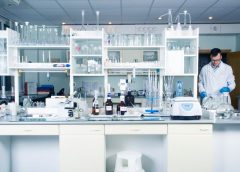Setting up a new laboratory requires considerable planning, with safety being a paramount consideration. Laboratories often house hazardous substances and potentially dangerous equipment, so following certain safety measures during setup is crucial. Here are some safety tips when setting up a new laboratory to help ensure a safe working environment.
Proper Lab Layout
An efficient laboratory layout is the first step in ensuring safety. The layout should facilitate smooth traffic flow and easy access to emergency exits, fire extinguishers, and safety showers. Space around the workstations should be ample enough for the safe handling of materials and equipment. Additionally, the lab layout should also consider the positioning of equipment that may require special ventilation or isolation.
Handling and Storing Chemicals
Proper handling and storage of chemicals is fundamental to laboratory safety. Researchers must group and store chemicals according to their hazard class and store incompatible substances separately to prevent reactions. Containers should be clearly labeled, and Material Safety Data Sheets should be readily available for all chemicals used in the lab.
Safe Storage of Acids
Following safety tips for storing acids in your laboratory is necessary due to acid’s corrosive nature. Researchers should keep these substances in a dedicated acid storage cabinet, away from bases and other reactive substances. Additionally, always store acids at a low level, preferably on the bottom shelf, to limit the potential for harmful splashes or spills. It’s also worth noting that specific types of acids, such as perchloric and nitric acids, require their own unique storage solutions due to their highly reactive nature.
Proper Use of Lab Equipment
Each piece of laboratory equipment comes with its own set of safety guidelines. Thoroughly understanding these guidelines before using any equipment is critical. Therefore, provide training, especially for complex equipment. Also, always ensure that equipment is well-maintained and serviced regularly to prevent malfunctions that could pose safety risks.
Now that you know these safety tips when setting up a new laboratory, you can make informed decisions to ensure a secure work environment.





